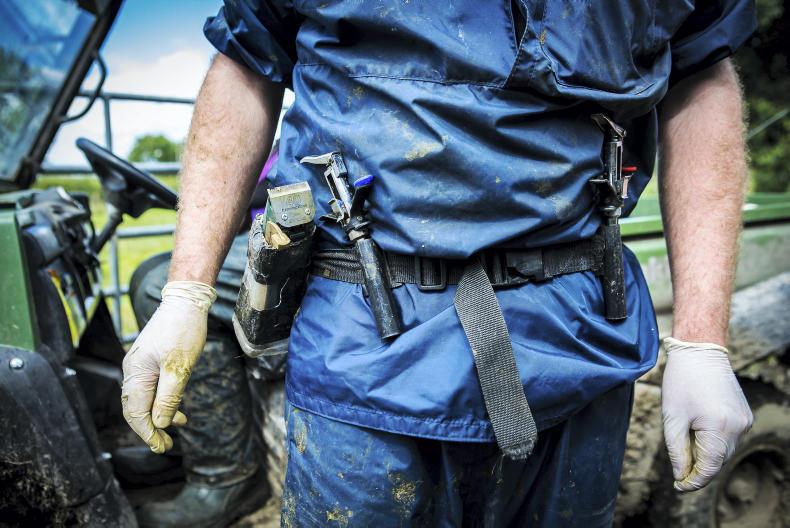The average number reactor animals per TB breakdown for the last 10 years current stands at four per episode.
A study conducted by UCD and the Department of Agriculture detailed the main predictors of TB breakdowns that are much higher. It classed these breakdowns as ones where there had 13 or more reactors.
Overall, the number of large TB incidences in Ireland has declined. However, the proportion of large breakdowns as a percentage of overall TB episodes has remained relatively consistent ranging from 5% to 6% for the last five years.
Risk factors
The study found that the following were the main predictors of a large outbreak;
Previous exposure to TB.Increasing TB incidence in the local area.An animal with a TB lesion. A TB episode in an associated herd (A herd linked for management or epidemiological reasons).Increasing herd-size.Policy implications
These findings may have policy implications and could be used to target future measures to specific herds or animals for additional surveillance measures.
Currently, herds with more severe episodes (>2 reactors) are designated as higher-risk status.
These herds undergo more rigorous testing post de-restriction and must pass three tests at six month intervals before returning to default risk status.
Herds with a large breakdown were shown by the study to pose a risk of having another breakdown in the future.
The study stated that: “Future controls on these herds will need to be continually reassessed to look at whether additional measures are appropriate, such as maintaining the higher-risk classification and rigorous testing of herds following a severe episode for longer periods after the episode has ended.”
The average number reactor animals per TB breakdown for the last 10 years current stands at four per episode.
A study conducted by UCD and the Department of Agriculture detailed the main predictors of TB breakdowns that are much higher. It classed these breakdowns as ones where there had 13 or more reactors.
Overall, the number of large TB incidences in Ireland has declined. However, the proportion of large breakdowns as a percentage of overall TB episodes has remained relatively consistent ranging from 5% to 6% for the last five years.
Risk factors
The study found that the following were the main predictors of a large outbreak;
Previous exposure to TB.Increasing TB incidence in the local area.An animal with a TB lesion. A TB episode in an associated herd (A herd linked for management or epidemiological reasons).Increasing herd-size.Policy implications
These findings may have policy implications and could be used to target future measures to specific herds or animals for additional surveillance measures.
Currently, herds with more severe episodes (>2 reactors) are designated as higher-risk status.
These herds undergo more rigorous testing post de-restriction and must pass three tests at six month intervals before returning to default risk status.
Herds with a large breakdown were shown by the study to pose a risk of having another breakdown in the future.
The study stated that: “Future controls on these herds will need to be continually reassessed to look at whether additional measures are appropriate, such as maintaining the higher-risk classification and rigorous testing of herds following a severe episode for longer periods after the episode has ended.”






 This is a subscriber-only article
This is a subscriber-only article










SHARING OPTIONS: